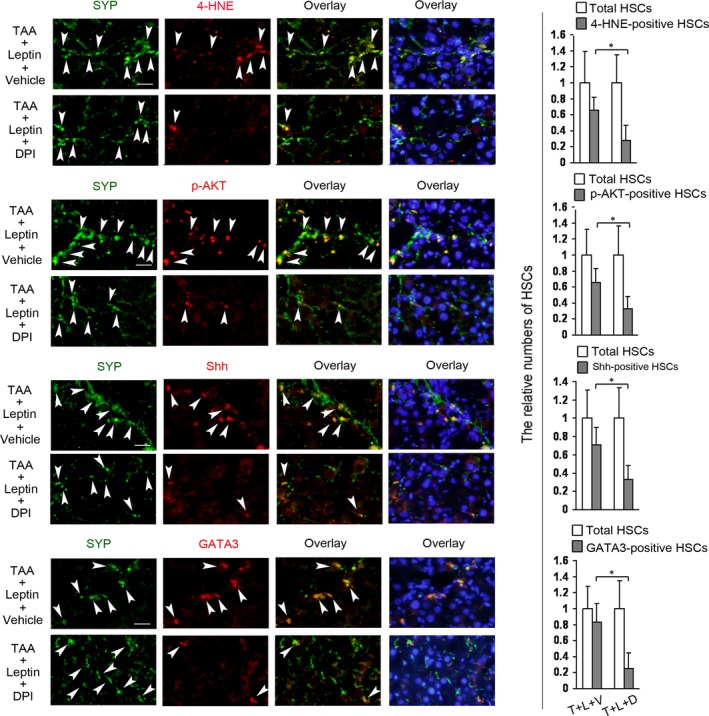Figure 6.

Inhibition of leptin‐induced NADPH oxidase pathway reduces the levels of 4‐HNE, p‐AKT, Shh, and GATA3 in HSCs in ob/ob mouse model of TAA‐induced liver injury. Two groups of ob/ob mice (6 mice/each group) were received DPI (1 μg/g body weight, once per day) or vehicle by i.p. throughout the 4‐week period of treatment with TAA plus leptin (TAA+Leptin+Vehicle = T+L+V; TAA+Leptin+DPI = T+L+D). Double fluorescence staining on the section of liver was performed for detecting 4‐HNE‐, p‐AKT‐, Shh‐, or GATA3‐positive HSCs by using the respective primary antibody plus primary antibody against SYP and subsequently the DyLight594‐conjugated secondary antibody and DyLight488‐conjugated secondary antibody. The nuclei were counterstained with Hoechst 33342 (blue fluorescence). The representative images were captured with the fluorescence microscope. Scale bar 25 μm. Arrowheads indicated examples of positively stained cells. The total HSCs (SYP‐positive HSCs, green fluorescence) and 4‐HNE‐, p‐AKT‐, Shh‐, or GATA3‐positive HSCs (red fluorescence) were counted in six randomly chosen fields at 100‐fold magnification and the values were expressed as fold changes relative to the respective total HSCs (empty column). The values were shown as a histogram on the right panel. *P < 0.05.
